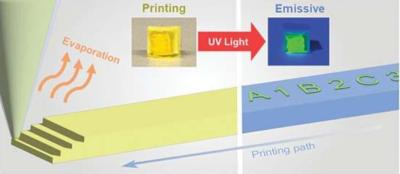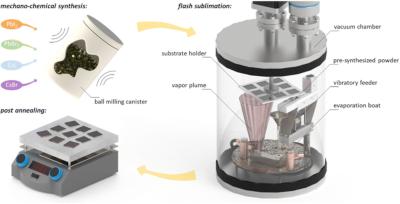Researchers achieve 3D printing of luminescent perovskite quantum dot–polymer architectures
Researchers from Ulsan National Institute of Science and Technology (UNIST), Korea Electrotechnology Research Institute (KERI) and Sungkyunkwan University (SKKU) recently developed a straightforward and effective method for producing 3D architectures of perovskite quantum dot (PQD)-encapsulated high-performance composites (PQD-HPCs) through direct-ink writing (DIW).
Schematic of the direct-ink writing (DIW) approach of luminescent PQD–polymer architectures. Image from Advanced Functional Materials
Led by Professor Im Doo Jung from the Department of Mechanical Engineering at UNIST, the recent study introduced a cutting-edge one-stop perovskite quantum dot (PQD) additive manufacturing technology. This approach eliminates the need for heat treatment, allowing for the creation of complex 3D shapes with exceptional precision, including iconic landmarks like the Eiffel Tower.






